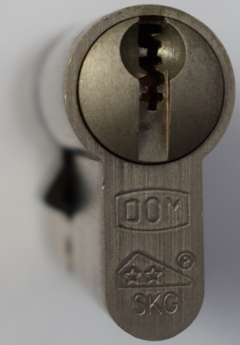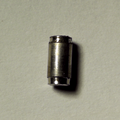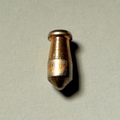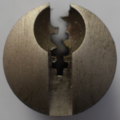DOM Plura: Difference between revisions
m (spec) |
m (silca blank) |
||
| (3 intermediate revisions by the same user not shown) | |||
| Line 9: | Line 9: | ||
| patent = | | patent = | ||
| years_produced = | | years_produced = | ||
| ratings = SKG** | | ratings = [[EN 1303 |EN 1303:2015]],<br> SKG** or SKG*** | ||
| related = | | related = | ||
| spec_on = true | | spec_on = true | ||
| Line 16: | Line 16: | ||
}} | }} | ||
The '''Plura''' is | The '''Plura''' is an [[EN 1303 |EN 1303:2015]]-rated [[Pin_tumbler |pin-tumbler]] lock made by [[DOM]]. Its major advantage are the possibility to combine SKG** and SKG*** and no special tools are required to assemble the cylinders. The nickel silver keys are registered, allowing direct order by the number. | ||
__TOC__ | __TOC__ | ||
| Line 25: | Line 25: | ||
:''See also: [[Pin_tumbler#Principles_of_operation|Pin-tumbler (Principles of operation)]]'' | :''See also: [[Pin_tumbler#Principles_of_operation|Pin-tumbler (Principles of operation)]]'' | ||
The lock contains six pin stacks - two chambers contain spooled drivers, the rest are tapered barrels. Chamber two contains a steel driver and key pin, the rest of pins is made of copper. The higher rated cylinder contains more steel pin pairs. Copper key pins are torpedo shaped, probably to act as an overset trap. The warding is relatively complex, but the keyway is not paracentric. | The lock contains six pin stacks - two chambers contain spooled drivers, the rest are tapered barrels. Chamber two contains a steel driver and key pin, the rest of pins is made of copper. The higher rated cylinder contains more steel pin pairs. Copper key pins are torpedo shaped, probably to act as an overset trap. The warding is relatively complex, but the keyway is not paracentric. Silca key blank number DM151R, JMA key blank number DOM-75 (steel) or ERREBI key blank number DM105. | ||
<div align="center"><gallery> | |||
File:DOM_Plura_barrel-Reinder.png | |||
File:DOM_Plura_keypin-Reinder.png | |||
File:DOM_Plura_keyway-Reinder.png | |||
</gallery></div> | |||
== Disassembly instructions == | == Disassembly instructions == | ||
| Line 32: | Line 38: | ||
Other possibility is to use a segmented follower, but that requires that both cores are pulled out a bit to allow a cam removal. Then a core should be rotated to approximately 4:30 or 7:30 o'clock position (135 degrees either clockwise or anti-clockwise) to prevent driver entering a gaps for the cam clutch. Then a segmented follower can be used to remove the core. | Other possibility is to use a segmented follower, but that requires that both cores are pulled out a bit to allow a cam removal. Then a core should be rotated to approximately 4:30 or 7:30 o'clock position (135 degrees either clockwise or anti-clockwise) to prevent driver entering a gaps for the cam clutch. Then a segmented follower can be used to remove the core. | ||
== Ratings == | |||
* [[EN_1303 |EN 1303:2015]]<ref>[https://www.dom-security.com/nl/en/products/dom-plura/european-profile/double-cylinder DOM Plura]</ref> | |||
* SKG*** | |||
== Vulnerabilities == | == Vulnerabilities == | ||
| Line 46: | Line 59: | ||
<div align="center"><gallery> | <div align="center"><gallery> | ||
File:DOM Plura key least.png|DOM Plura keys. | File:DOM Plura key least.png|DOM Plura keys. | ||
File:DOM Plura side least.png|DOM Plura cylinder side view. | |||
File:DOM Plura bible bottom least.png|DOM Plura's bottom of the bible showing the drill protection. | |||
File:DOM Plura keyway least.png|DOM Plura keyway detail. | File:DOM Plura keyway least.png|DOM Plura keyway detail. | ||
File:DOM Plura core least.png|DOM Plura's core detail. | |||
File:DOM Plura pins least.png|DOM Plura pins detail. | File:DOM Plura pins least.png|DOM Plura pins detail. | ||
</gallery></div> | </gallery></div> | ||
| Line 65: | Line 80: | ||
[[Category:DOM]] | [[Category:DOM]] | ||
[[Category:Pin-tumbler locks]] | [[Category:Pin-tumbler locks]] | ||
[[Category:EN 1303 locks]] | |||
[[Category:SKG locks]] | [[Category:SKG locks]] | ||
Latest revision as of 22:34, 10 January 2023
DOM Plura
| DOM Plura | |
 | |
| Name | DOM Plura |
|---|---|
| Manufacturer | DOM |
| Lock Type | Cylinder |
| Lock Design | Pin-tumbler |
| Security Rating(s) | EN 1303:2015, SKG** or SKG*** |
| Specifications | |
| # of Components | 6 |
| Component Type | Pin-tumbler |
The Plura is an EN 1303:2015-rated pin-tumbler lock made by DOM. Its major advantage are the possibility to combine SKG** and SKG*** and no special tools are required to assemble the cylinders. The nickel silver keys are registered, allowing direct order by the number.
Principles of operation
- See also: Pin-tumbler (Principles of operation)
The lock contains six pin stacks - two chambers contain spooled drivers, the rest are tapered barrels. Chamber two contains a steel driver and key pin, the rest of pins is made of copper. The higher rated cylinder contains more steel pin pairs. Copper key pins are torpedo shaped, probably to act as an overset trap. The warding is relatively complex, but the keyway is not paracentric. Silca key blank number DM151R, JMA key blank number DOM-75 (steel) or ERREBI key blank number DM105.
Disassembly instructions
To disassemble a double euro cylinder, use of a pinning shoe is the preferred method.
Other possibility is to use a segmented follower, but that requires that both cores are pulled out a bit to allow a cam removal. Then a core should be rotated to approximately 4:30 or 7:30 o'clock position (135 degrees either clockwise or anti-clockwise) to prevent driver entering a gaps for the cam clutch. Then a segmented follower can be used to remove the core.
Ratings
- EN 1303:2015[1]
- SKG***
Vulnerabilities
The DOM Plura is vulnerable to one or more of the following:
Gallery







